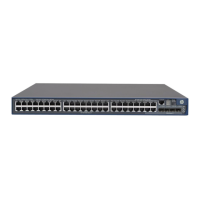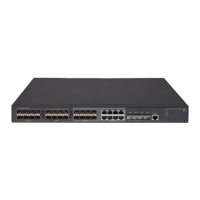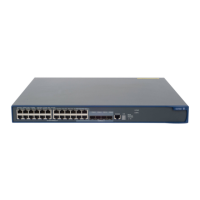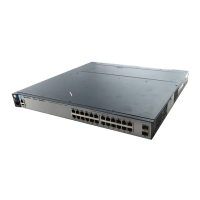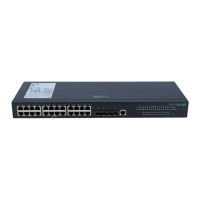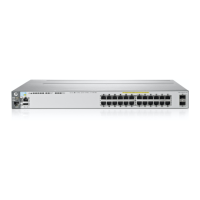B-1
B
Cabling and Technology Information
This appendix includes network cable information for cables that should be
used with the Switch E2620, including minimum pin-out information and
specifications for twisted-pair cables.
Note Incorrectly wired cabling is the most common cause of problems for LAN
communications. HP recommends that you work with a qualified LAN cable
installer for assistance with your cabling requirements.
Cabling specifications
Note on 1000Base-T Cable Requirements
The Category 5 networking cables that work for 100Base-TX connections
should also work for1000Base-T, as long as all four-pairs are connected. But,
for the most robust connections you should use cabling that complies with
the Category 5e specifications, as described in Addendum 5 to the TIA-568-A
standard (ANSI/TIA/EIA-568-A-5).
Table B-2. Cabling Specifications
Twisted-pair copper
10 Mbps Operation Category 3, 4 or 5, 100-ohm unshielded twisted-pair (UTP) or
shielded twisted-pair (STP) cable, complying with IEEE 802.3
10BASE-T specifications.
100 Mbps Operation Category 5, 100-ohm UTP or STP cable, complying with IEEE 802.3u
100BASE-TX specifications.
1000 Mbps Operation Category 5, 100-ohm 4-pair UTP or STP cable, complying with IEEE
802.3ab 1000BASE-T specifications—Category 5e or better is
recommended. See note on 1000BASE-T Cable Requirements
below.
Multimode fiber
62.5/125 μm or 50/125 μm (core/cladding) diameter, low metal
content, graded index fiber-optic cables, complying with the
ITU-T G.651 and ISO/IEC 793-2 Type A1b or A1a standards
respectively.
1
Single mode fiber
9/125 μm (core/cladding) diameter, low metal content fiber-optic
cables, complying with the ITU-T G.652 and
ISO/IEC 793-2 Type B1 standards.
1
A mode conditioning patch cord may be needed for some Gigabit-LX installations.
See “Mode Conditioning Patch Cord” on page B-3 for more information.
